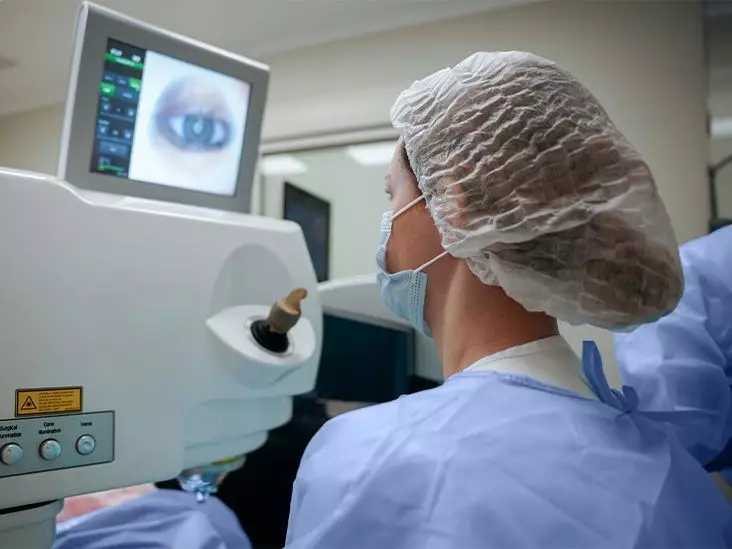Diabetic retinopathy (DR) is a chronic ocular condition stemming from diabetes, which can lead to severe vision impairment if not effectively managed. The Diabetic Retinopathy Severity Scale (DRSS) serves as a crucial tool for healthcare professionals in evaluating the severity and progression of this condition. This article delves into the intricacies of DR, the role of the DRSS, and preventative strategies for individuals at risk.
Diabetic retinopathy is a complication that arises from diabetes, primarily characterized by damage to the retinal blood vessels due to prolonged high blood sugar levels. These fluctuations can lead to significant alterations in the structure and function of the retina, which is the crucial tissue at the back of the eye responsible for capturing light and sending visual signals to the brain. Without timely intervention, DR can culminate in serious vision problems, including complete vision loss.
The disease often develops silently, with many individuals displaying no symptoms during its initial stages. This asymptomatic nature poses a serious risk, as the condition can progress undetected. Regular eye examinations are essential for early detection, allowing for interventions that can prevent severe outcomes.
The Diabetic Retinopathy Severity Scale, particularly the Early Treatment Diabetic Retinopathy Study (ETDRS) scale, plays an integral role in assessing the extent of the disease. This 13-level scale provides a detailed classification system that aids healthcare professionals in categorizing the severity of an individual’s DR based on observable clinical signs during eye examinations.
The ETDRS score is determined through a standard eye test where patients are asked to read letters from an ETDRS eye chart. The ability to discern letters from this progressively smaller set correlates with visual acuity, and the number of correctly identified letters determines the patient’s score. This systematic approach enables a nuanced understanding of how DR is impacting vision.
The severity of DR is classified into two primary categories: non-proliferative diabetic retinopathy (NPDR) and proliferative diabetic retinopathy (PDR).
1. **Non-Proliferative Diabetic Retinopathy (NPDR)**: This initial stage often shows minimal to no symptoms. In NPDR, minor abnormalities such as microaneurysms and retinal swelling arise as blood vessels weaken or close. Although patients may not experience immediate vision issues, the condition can gradually worsen and progress to PDR.
2. **Proliferative Diabetic Retinopathy (PDR)**: PDR represents a more advanced stage where new, abnormal blood vessels grow on the retina. These vessels are fragile and prone to leaking blood, potentially causing severe visual disturbances. Symptoms may include blurred vision and dark spots. Left unchecked, PDR can lead to profound vision loss due to retinal detachment or severe bleeding inside the eye.
The distinction between NPDR and PDR is crucial, as it directs the therapeutic approach taken by healthcare providers.
Management of diabetic retinopathy hinges on both medical intervention and lifestyle modifications. Early detection through annual comprehensive dilated eye examinations is recommended. These exams are vital for spotting changes before they escalate into more serious conditions.
In addition to regular eye check-ups, patients can take proactive steps to manage their diabetes effectively and mitigate the risk of developing DR. Some key strategies include:
– **Blood Sugar Control**: Keeping blood glucose levels within the recommended range is foundational. This can be achieved through medication, dietary management, and regular physical activity.
– **Maintaining Healthy Blood Pressure and Cholesterol**: Monitoring and controlling blood pressure and cholesterol levels are essential, as they contribute to overall vascular health.
– **Lifestyle Modifications**: Engaging in physical activity and adhering to a balanced diet can greatly influence diabetes management. Additionally, maintaining a healthy weight further reduces the risk of complications.
Healthcare professionals are pivotal in managing diabetic retinopathy. By utilizing the DRSS and the ETDRS, they can determine the most appropriate treatment options based on the disease’s progression. Treatment modalities may include anti-VEGF injections, corticosteroids, laser treatments, or even surgical interventions, depending on the severity.
Understanding diabetic retinopathy and the significance of the DR severity scale empowers both healthcare providers and patients. Through early detection, effective management, and patient education, the risks associated with DR can be significantly reduced, preserving vision and enhancing quality of life for individuals living with diabetes. Continuous research and advancements in treatment underscore the importance of vigilance in the management of this prevalent diabetes-related complication.

